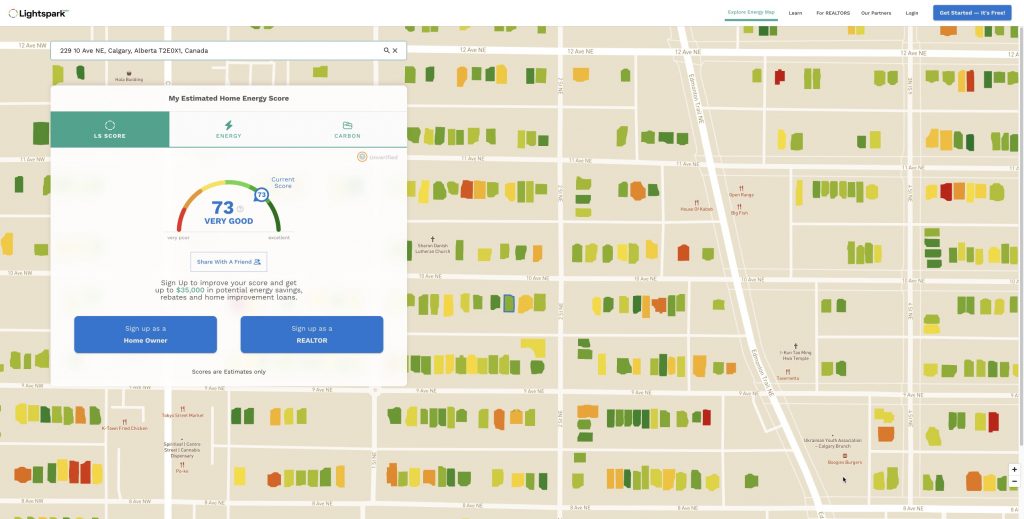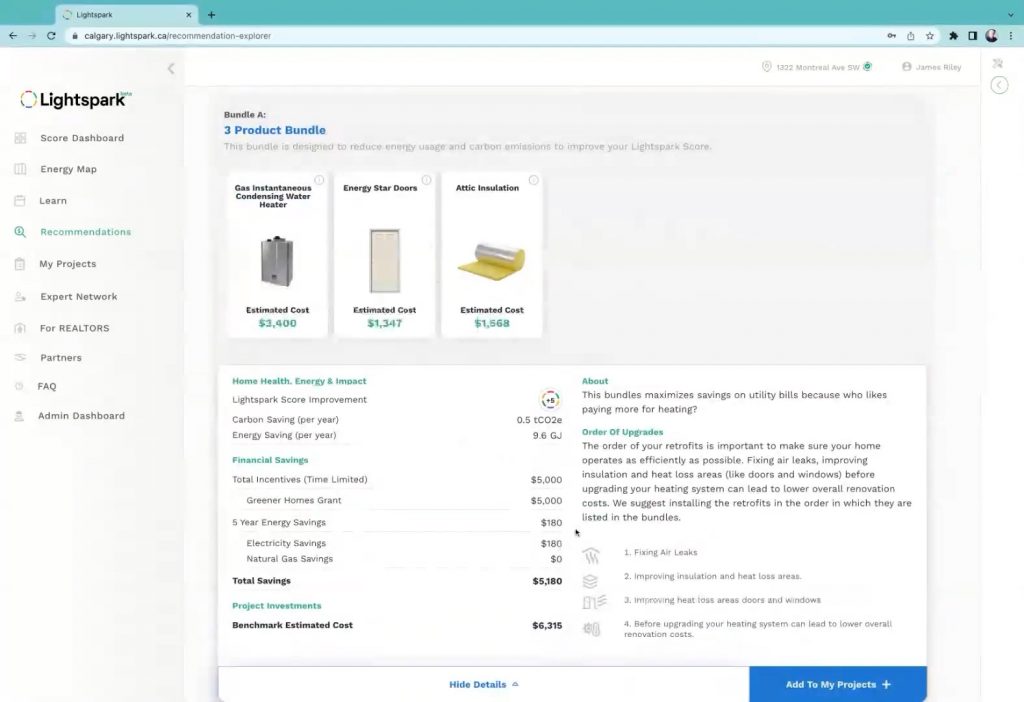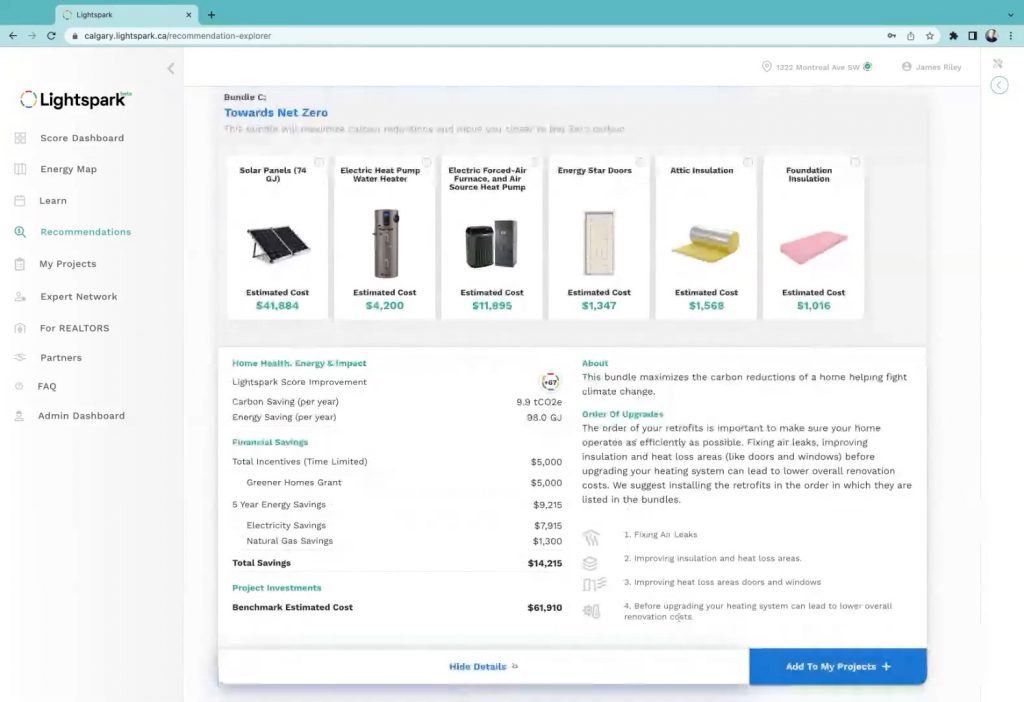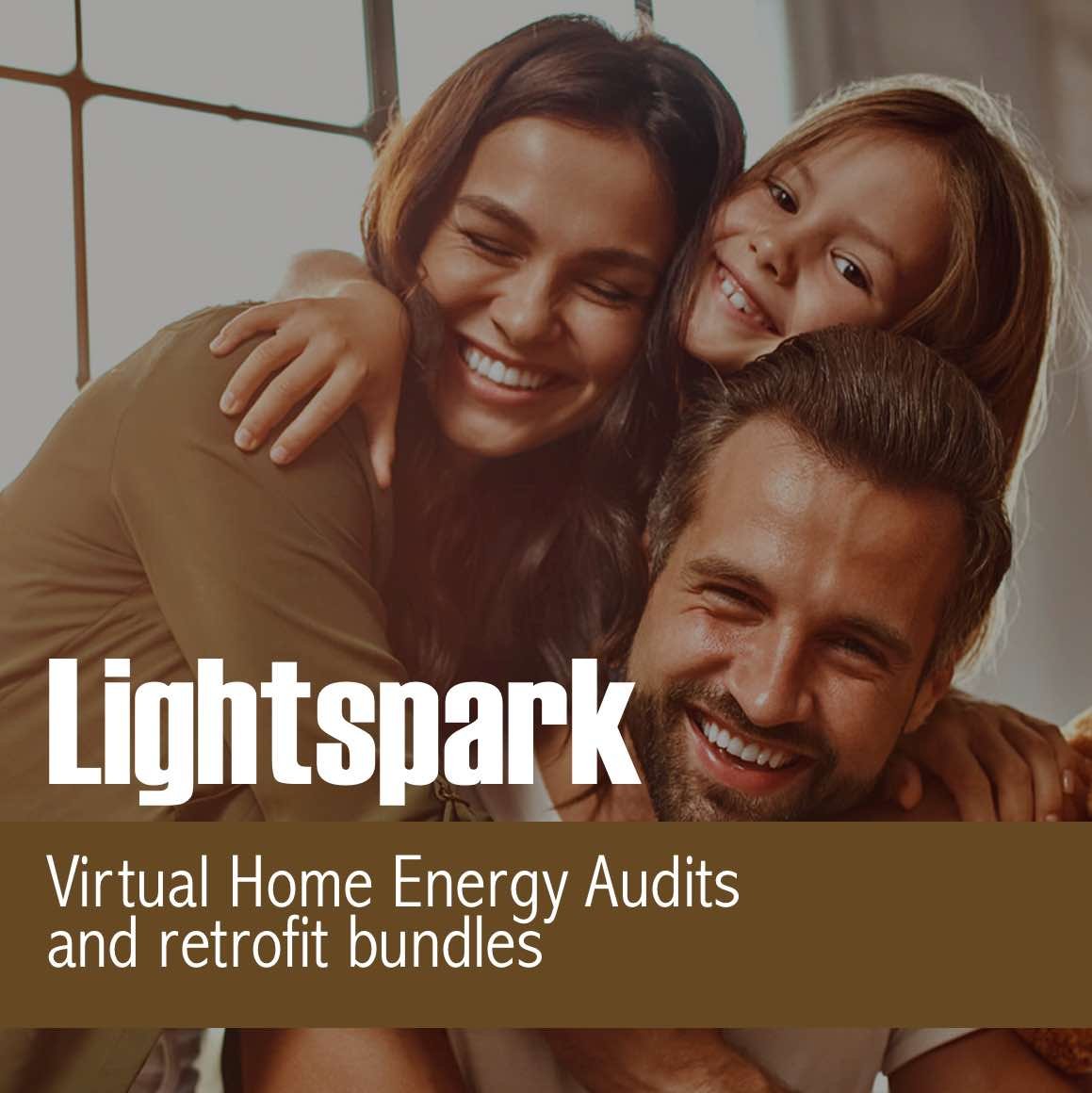By David Dodge, GreenEnergyFutures.ca
Lightspark, a Canadian software company has developed an amazing new tool that generates a virtual energy audit of your home using machine learning and big data.
Volatile energy prices, carbon pricing and climate change have more and more people trying to figure out how to improve the energy efficiency of their homes and even pursue energy independence. But where to start?
After years of development Lightspark has launched what they hope will be the holy grail of energy efficiency tools for homeowners. They recently launched the beta pilot version of their software that has created virtual audits of nearly all of the homes in Calgary and Edmonton, Alberta, Canada.

The digital home energy audit
“We built this site to make it easier for you to save money on energy, find home improvement incentives, and find loans,” says James Riley CEO of Lightspark.
“It’s a free service to get your home energy score. Our goal is to help you make your home more comfortable and more valuable and to make it easy.”
Online Riley navigates to the Lightspark.ca homepage, selects Calgary, Alberta and then clicks on one of the homes that is on the city map, each of which sports a color indicative of the home’s energy rating.
“Without even having to register you get the Lightspark score of your home. So that’s important because this really represents the money you might be wasting,” says Riley.
The score is on a scale of 1 to 100 colored in red in the low range and green as you get closer to 100.
Lightspark built model profiles of typical homes based on big data and this is their best guess at where your home sits on the energy efficiency spectrum.
But this is just the start.


Bundled energy efficiency solutions
Once you register the tool allows you to confirm the details of your home using their digital home survey. You confirm things such as your furnace type, water heater and other details. You do this by selecting representative images of your furnace and other components.
Then you can even enter your EnerGuide audit data if you have one.
Then the magic happens. The Lightspark software provides you with three retrofit options sorted by price and the extent of the retrofits.
In the example Riley showed us the first option was to replace your water heater, doors and windows and attic insulation.
The thing that makes this tool cool is that it also provides estimated costs and benefits of each improvement.
“It’s really hard to make a decision when there’s zero price information, when the only information is ‘this will save one gigajoule,’” says Riley.
“To the average consumer, it’s like what does that even mean? How much am I going to save? How much does it cost me? What’s the benefit? How does it improve my comfort? says Riley.
Lightspark also provides some information about the order of upgrades. As we have learned on Green Energy Futures you want to avoid incremental upgrades that will prevent you from doing more later on.
This is just the beta pilot version of the software, but this is the missing link of tools to help begin to take the mystery out of home energy efficiency for homeowners.
With each bundle of improvements, the tool lists your energy savings, carbon reductions and monetary savings.
In this example the third bundle suggests adding solar to the home, switching to a heat pump water heater, replacing a gas furnace with a heat pump, better doors, attic insulation and insulation for the foundation. The total cost is $60,000 and the report says you can get a Green Homes Grant of $5,000.
In the coming months Riley says Lightspark is working on improvements that will allow you to customize your retrofit bundles.
Why virtual audits could be a gamechanger
Canada has a goal of getting to net-zero by 2050, as do other jurisdictions such as the City of Edmonton. To do this we will have to deal with the one third of emissions that come from buildings. The building code is moving towards net-zero for new buildings – check!
But what to do with the 80 per cent of buildings that are already built inefficiently?
Peter Amerongen of Butterwick Projects is trying a new idea called EnergieSprong where they laser scan the walls and roof of homes and built a whole new net-zero ready exterior as panels in a factory. They’ve done this to 59 units in the Sundance housing Coop in Edmonton, Alberta as a pilot. But that’s just the tip of the iceberg.
“We’re at the very beginning, we have about 14 million dwellings in Canada. And 8 million of those are single family houses. We need to do about one every two seconds to be done by 2030,” says Amerongen.
Peter Amerongen of Butterwick projects has renovated 59 homes in the Sundance Housing Cooperative to net-zero, but you should avoid incremental upgrades.
People are just starting to appreciate the benefits of deep energy retrofits to their homes as the prices of energy fluctuate wildly and carbon taxes come into play.
But there are no where nearly enough energy auditors that are certified to do official EnerGuide audits in Canada. After announcing the Greener Homes program the federal government recorded 70,000 requests for audits.
To address the waiting list issue for auditors Riley thinks we should start looking integrating digital audits into a hybrid system where auditors could do some of their work remotely and much more quickly, for less cost.
The audits are necessary, but homeowners are often wary of the cost and process of doing an audit.
Many have tried to create tools like Lightspark, but it’s very complicated and halfway solutions don’t really help much.
Success comes from good information
We did an audit of our Evansdale Communty Hall in my neighbourhood many years ago and we lucked out, the auditor was new in the business and really wanted to impress his clients so he not only proposed solutions, he provided a few quotes so we knew what the costs would be. I am 100 per cent sure we would not have done many of the recommended actions if we were left to our own devices. As it turned out we undertook every retrofit recommended in the report and more and we were super pleased with the results. The community hall now has solar, energy efficient heating, a heat pump water heater, LED lighting and much more.
Riley hopes they can take Lightspark to the next level over the long term and connect homeowners with companies and quotes to make the process easier.
Deep Energy Retrofits
Meanwhile homeowners are showing increasing interest in making serious energy efficiency improvements to their homes.
Darren and Darcy Crichton started renovating their 1960s bungalow 20 years ago, but they did impeccable research every step of the way making the right upgrades in the right order in their two-decade long DIY project. Today their home is solar powered, geothermal heated and net-zero.
Jena and Jesse Tufts on the other hand had a 1950s home with frost on the interior walls in the winter. They removed the roof, added a second floor and renovated their home to an amazing net-zero home complete with a rooftop veranda surrounded by solar modules.

